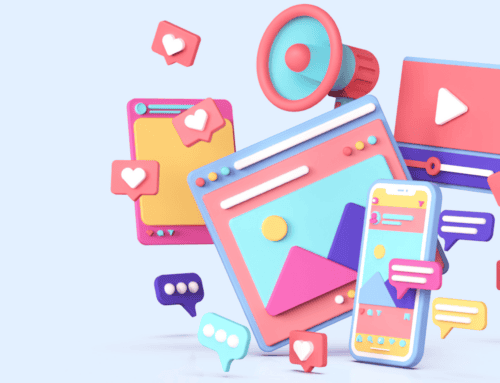Of all the digital tactics a business can pursue, email may be the most cost-effective one of them all. For every dollar spent, you can expect $42 back on average. And there are three main reasons why. First, emails are relatively easy to produce. You don’t need a large team or much time to produce them. Additionally, they can be created and sent in only a few hours. Second, they can’t be ignored. Once they arrive, the recipient has to read the subject line at the very least, even if they end up deleting it.
Lastly and most importantly, email is versatile. It boosts revenue, promotes content, advertises sales, offers discounts, and drives traffic to their website and social media. Moreover, it strengthens relationships with your customers. Remaining in contact ensures customers stay familiar with your business and the benefits it provides.
A successful email campaign relies on a few key elements to entice and engage readers. These include:
A Killer Subject Line
The first thing your reader sees and your email’s most important feature. A strong subject line motivates readers who might otherwise have deleted it out of routine. The most effective:
- Contains 6-10 Words. A concise headline is more impactful. The more customers have to read, the less likely they are to open your email. You need to stir their interest in as few words as possible.
- Don’t Mention Newsletter. Newsletters have a bad reputation. People think of them as dry, stuffy lists, which is why open rates for newsletters are notoriously low. That doesn’t mean you shouldn’t send them out; just don’t include the word in your intro.
- Avoid Spam Words & Special Characters. Your reputation is reflected in the way you write. If you capitalize every letter or throw in punctuation and readers will mark your emails as spam. The same goes for suspect phrases, such as:
- Order Now
- Free Membership
- Gift Certificate
- Limited Time Only
- Satisfaction Guaranteed
- Sign Up Free
- Congratulations
- Trial Offer
- Use Action Words. Subject lines are meant to motivate readers, so focus on words that create a sense of urgency. Customers click when they’re afraid of missing out on something valuable. Words related to pain points work even better. For example:
- Save
- Avoid
- Increase
- Improve
- Learn
- Establish Time Frames. You want people to click your email as soon as they see it, so choose words and phrases that indicate time’s running out.
- Now
- Today
- Limited Time
- This Week Only
- Before Supplies Run Out
Personalization
People like knowing they’re more than a number, which is why adding your customer’s name to the subject line significantly increases open rates. Working it into your main copy also increases click-through rates. But for better results, you can go further.
Pulling data from customer profiles lets you personalize email content. If you run a pet store, for instance, you can email cat owners about cat products, insert cat pictures, or direct them to cat content on your website. If you want to get really personal, send an email on their birthday. And then, of course, you can do the same for dog owners, fish owners, and bird owners as well.
This type of market segmentation (dividing customers into groups based on needs and interests) takes effort, but pays dividends. Emails that talk directly to customers about meaningful topics convert at a much higher rate.
Right Length
Do customers prefer long or short emails? Surprisingly, the answer’s both. While emails with 200-250 words have the best response, emails with less than 50 words do almost as well. However, when an email falls between these two ranges, it doesn’t get as many responses. The reason why is unclear, but it appears medium-length emails aren’t detailed enough to convince readers and sufficient intrigue to make them click through.
Keep Your Call to Action Above the Fold
When people open your email, your call to action (CTA) should be the first thing they see. Readers spend most of their time on above the fold content ‒ the images and copy they can see before scrolling down. Repeating your CTA below the fold also helps conversions, but it should always appear first where it’s most visible.
Images
Around 80 percent of emails wind up in the trash. In fact, most people decide to read or delete an email in less than three seconds after opening it. That’s a small window, but with the right image, it’s enough.
Images work on an intuitive level. They’re easy to identify. They evoke strong emotions. And they stick in our memories. While words tend to slip away, people can still recall images associated with them days afterwards. Images are most effective when:
- They Feature People. Faces are how we read emotional and social cues, which is why we’re drawn to them. Pictures with faces are liked, shared, and commented on more than any other type of image.
- They’re Relevant. Unexpected images are a great way to grab people’s attention, but if they’re unrelated to your topic, they’ll confuse rather than captivate.
- They’re the Right Format. Poor resolution and slow-loading times hurt campaigns. Unfortunately, there’s no universal image file that’ll protect you from both. You have three different types to choose from instead, each with their own advantages.
- JPEG. Have a lower resolution but are more compact, which is important because most users delete emails that don’t load quickly.
- PNG. Great for colors, logos, and images with text. However, they’re larger and load slower than JPEGs.
- GIF. Animated images. They load quickly and are useful for email clients that don’t allow embedded videos.
Optimize for Mobile Users
Forty percent of emails are opened and read on mobile devices. Nearly every (85 percent) smartphone user prefers checking email on their phone instead of a desktop. Therefore, it’s imperative to see how emails appear on tablets and cell phones before you send them out, otherwise you risk missing out on a huge chunk of the market.
Deliver at the Right Time
Emails sent at the wrong time won’t be read. For instance, hardly anyone checks email on the weekend or early in the morning, when they’re rushing to get to work. Emails sent in late afternoon and early evening don’t have a great open rate either.
The best time is 10 a.m. Monday-Friday, once people have settled into work and are starting their coffee breaks. There’s a similar window in the afternoon around 3-4, when most of the day’s work has been completed and everyone’s taking a moment before heading home again.




